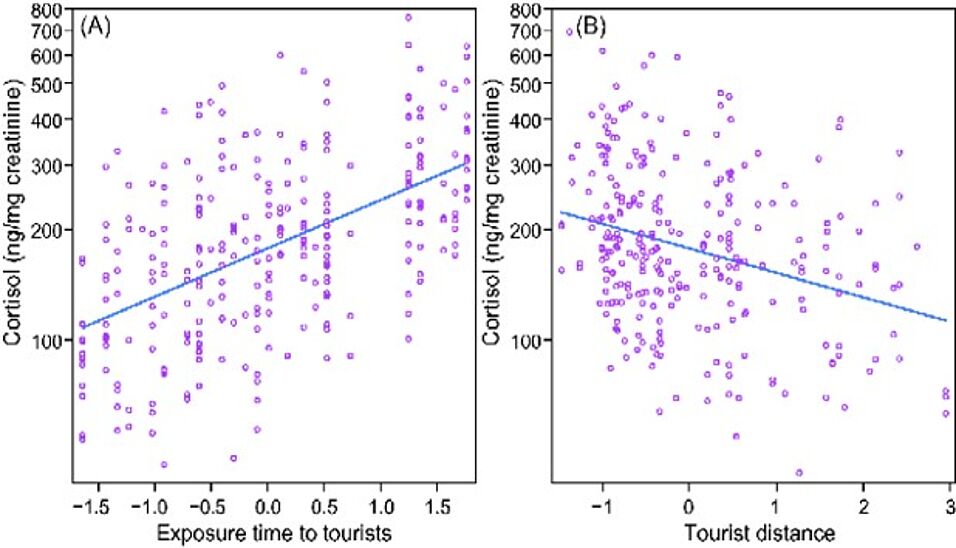Abstract
Wildlife tourism is a thriving form of nature-based tourism that can provide revenue for conservation funds, and increase public awareness of biodiversity conservation (Xiang et al. 2011). Tourism, however, may induce behavioral and physiological stress responses on animals (Maréchal 2015; Beehner and Bergman 2017). Part of the physiological stress response is increased activity of the hypothalamic–pituitary–adrenal (HPA) axis, resulting in the systemic elevation of glucocorticoids. An increase of glucocorticoids in the bloodstream leads to rapid mobilization of stored energy reserves and inhibitions of nonimmediately critical activities like growth, reproduction, and digestion in response to environmental challenges (Beehner and Bergman 2017). Although there is a debate as to whether deleterious chronic stress exists in wild populations (Beehner and Bergman 2017), measuring glucocorticoids is an important tool in assessing anthropogenic disturbance to animals (Maréchal 2015; Palme 2019). Cortisol, the main glucocorticoid secreted in primates, is metabolized by the liver and partly excreted in urine, meaning that elevations of cortisol and its metabolites produced in the stress response can be detected by using urine (Palme 2019).
Chen, H., Yao, H., Ruan, X., Wallner, B., Ostner, J., & Xiang, Z. (2020). Tourism may trigger physiologically stress response of a long-term habituated population of golden snub-nosed monkeys. Current Zoology, [zoaa076]. https://doi.org/10.1093/cz/zoaa076

